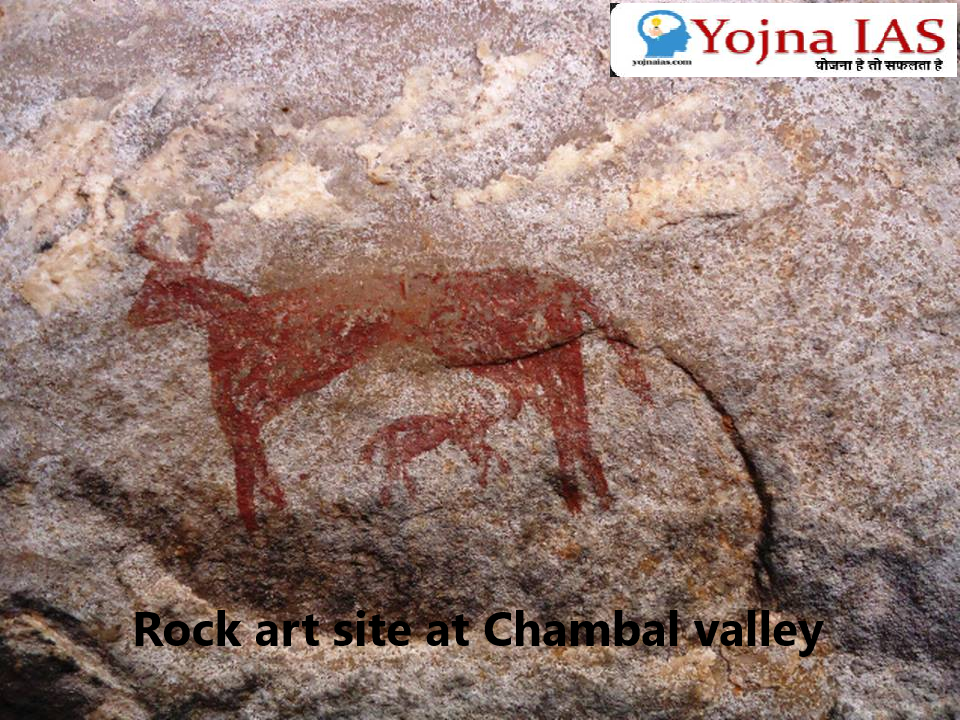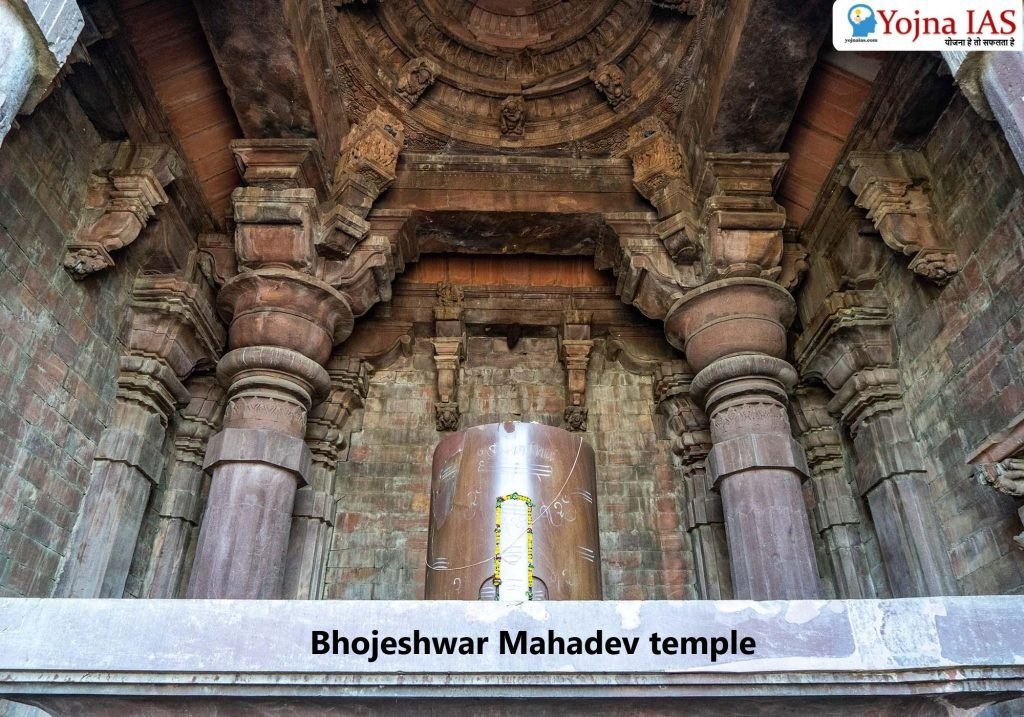04 Apr 2024 6 sites of MP added to the tentative UNESCO list of World Heritage Sites
This article covers ‘Daily Current Affairs’ and the topic details of ”6 sites of Madhya Pradesh added to the tentative UNESCO list of World Heritage Sites (WHS)”. This topic is relevant in the “History and culture” section of the UPSC CSE exam.
Why in the News?
Recently, six new sites from Madhya Pradesh have been added to the Tentative UNESCO list of World Heritage Sites (WHS).
Significant features of the selected 6 sites
1. Historical group of Dhamnar
- The Historical Group of Dhamnar boasts a remarkable collection of 51 caves, stupas, and dwellings. Dating back to the 7th century AD, this site offers a glimpse into India’s rich Buddhist heritage.
- A true centrepiece is the colossal statue of Gautam Buddha in a peaceful reclining posture (nirvana pose). This awe-inspiring figure is just one of the many treasures found at Dhamnar.
- The significance of Dhamnar extends beyond its size. The northern caves, particularly Bari Kacheri and Bhima Bazar, stand out for their historical importance and architectural beauty.
- Interestingly, the site’s modern name, Dhamnar, might have Shaivite roots. Some believe it stems from the term “Dharmanatha,” which hints at the region’s diverse cultural influences. While its historical name was Chandananagari-mahavihara, Dhamnar’s current name reflects its enduring legacy.
2. Rock art sites of Chambal Valley
- The Chambal Valley is renowned for hosting the largest concentration of rock art sites globally, offering a captivating glimpse into ancient human life and cultural progression.
- These sites, spread across Madhya Pradesh, Rajasthan, and Uttar Pradesh, portray scenes from diverse historical epochs and civilisations. Notable locations such as Bhimlat Mahadev, Chaturbhuj Nath Nala, and Garadia Mahadev contribute significantly to the region’s rich rock art heritage.
- Flourishing amidst the hilly terrain of the Vindhyan, Satpura, and Kaimur ranges, this artistic expression seamlessly integrates with the surrounding natural landscape.

3. Gond Memorial of Ramnagar
- The Gond Memorial in Ramnagar, Mandla, serves as a tribute to the esteemed cultural heritage of the Gond tribe, which is historically significant in the Central Provinces of India.
- Comprising structures like Moti Mahal, Raibhagat ki Kothi, Suraj Mandir, Begum Mahal, and Dalbadal Mahal, this collection embodies the architectural and historical richness of the area.
- Located at the heart of what was formerly recognised as Gondwana, the site provides insight into the diverse cultural heritage of India, spanning present-day Madhya Pradesh, Chhattisgarh, and Maharashtra.
4. Burhanpur khooni bhandara
- Burhanpur’s Khooni Bhandara stands as a fascinating example of ancient water management systems comprising eight subterranean water structures. Constructed under the supervision of Abdurrahim Khankhana using the Persian Qanat technique, this engineering marvel played a crucial role in sustaining the historical city.
- In the era of the Mughal empire, innovations such as Persian Qanats made their way to India, demonstrating cultural exchange and inventive engineering techniques of the time. The distinct mineral-rich water, tinted with a reddish hue, earned the name “khooni” (bloody), adding to the site’s intrigue and historical importance.
5. Bhojeshwar Mahadev temple
- Built under the patronage of Raja Bhoj during the 11th century, the Bhojeshwar Mahadev Temple serves as a symbol of ancient architectural excellence and reverence for Lord Shiva.
- Its magnificence is evident not just in its colossal Linga crafted from a single rock but also in its elaborate engravings and statues. The temple embodies the Bhumija architectural style, which is marked by its towering shikhara and intricate adornments, incorporating elements influenced by the Dravidian architectural tradition.

6. Gwalior fort
- Situated atop a hill, Gwalior Fort is famed not just for its imposing fortifications but also for offering awe-inspiring panoramic vistas of the surrounding city. Historical records attribute the fort’s origins to the 6th century AD, credited to the Rajput warrior Suraj Sen.
- Throughout its existence, Gwalior Fort has witnessed a turbulent history marked by invasions, reconstructions, and shifts in governance. Among its notable features are ancient temples like Teli ka Mandir, Chaturbhuj Temple, Sas Bahu Temples, and the Gurdwara Data Bandi Chhor, all contributing to its cultural significance.
- References in ancient Sanskrit inscriptions such as Gopachala or Gopagiri highlight its strategic perch atop basalt rock hills.
Download Yojna daily current affairs eng med 4th April 2024
Prelims practise question
Q1. Which one of the following statements is correct? ( UPSC 2022)
(a) Ajanta Caves lie in the gorge of the Waghora River.
(b) Sanchi Stupa lies in the gorge of the Chambal River.
(c) Pandu-Lena Cave Shrines lie in the gorge of the Narmada River.
(d) Amaravati Stupa lies in the gorge of the Godavari river.
Answer: A
Mains practise question
Q1. How can the recognition of world heritage sites contribute to sustainable tourism and economic development?
I am a content developer and have done my Post Graduation in Political Science. I have given 2 UPSC mains, 1 IB ACIO interview and have cleared UGC NET JRF too.


No Comments